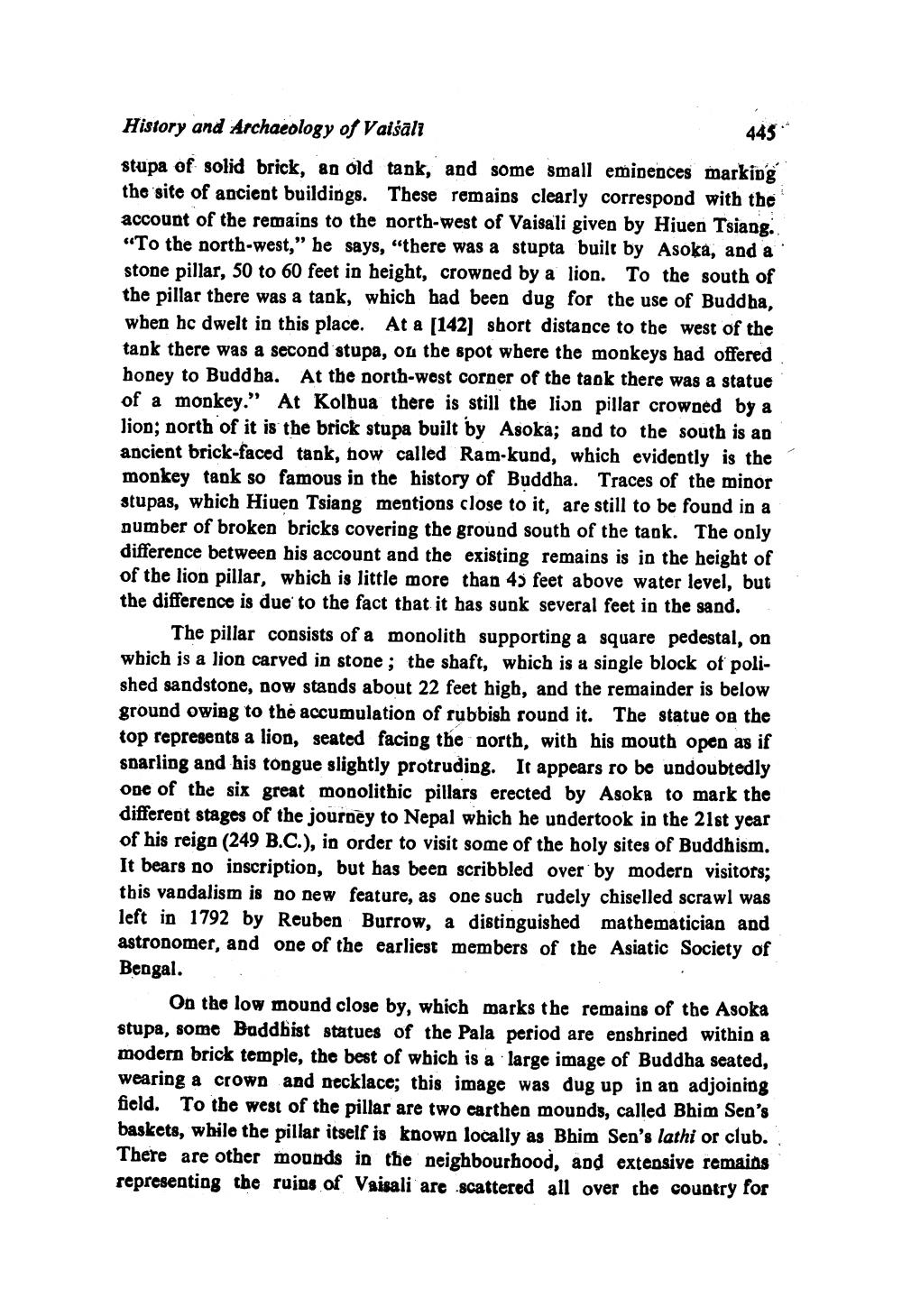________________ History and Archaeology of Vaisali 4454 stupa of solid brick, an old tank, and some small eminences marking the site of ancient buildings. These remains clearly correspond with the account of the remains to the north-west of Vaisali given by Hiuen Tsiang. "To the north-west," he says, "there was a stupta built by Asoka, and a stone pillar, 50 to 60 feet in height, crowned by a lion. To the south of the pillar there was a tank, which had been dug for the use of Buddha, when hc dwelt in this place. At a [142] short distance to the west of the tank there was a second stupa, on the spot where the monkeys had offered honey to Buddha. At the north-west corner of the taok there was a statue of a monkey." At Kolhua there is still the lion pillar crowned by a lion; north of it is the brick stupa built by Asoka; and to the south is an ancient brick-faced tank, now called Ram-kund, which evidently is the monkey tank so famous in the history of Buddha. Traces of the minor stupas, which Hiuen Tsiang mentions close to it, are still to be found in a number of broken bricks covering the ground south of the tank. The only difference between his account and the existing remains is in the height of of the lion pillar, which is little more than 43 feet above water level, but the difference is due to the fact that it has sunk several feet in the sand. The pillar consists of a monolith supporting a square pedestal, on which is a lion carved in stone; the shaft, which is a single block of polished sandstone, now stands about 22 feet high, and the remainder is below ground owing to the accumulation of rubbish round it. The statue on the top represents a lion, seated facing the north, with his mouth open as if snarling and his tongue slightly protruding. It appears to be undoubtedly one of the six great monolithic pillars erected by Asoka to mark the different stages of the journey to Nepal which he undertook in the 21st year of his reign (249 B.C.), in order to visit some of the holy sites of Buddhism. It bears no inscription, but has been scribbled over by modern visitors; this vandalism is no new feature, as one such rudely chiselled scrawl was left in 1792 by Reuben Burrow, a distinguished mathematician and astronomer, and one of the earliest members of the Asiatic Society of Bengal. On the low mound close by, which marks the remains of the Asoka stupa, some Buddhist statues of the Pala period are ensbrined within modern brick temple, the best of which is a large image of Buddha seated, wearing a crown and necklace; this image was dug up in an adjoining field. To the west of the pillar are two carthen mounds, called Bhim Sen's baskets, while the pillar itself is known locally as Bhim Sen's lathi or club. There are other mounds in the neighbourhood, and extensive remains representing the ruins of Vaisali are scattered all over the country for




